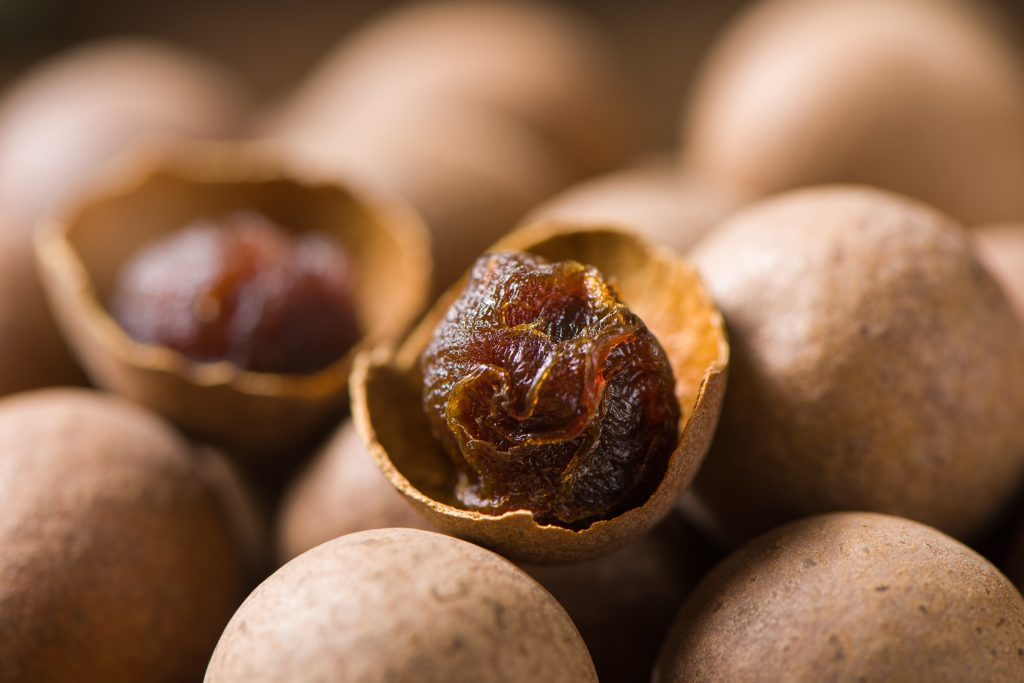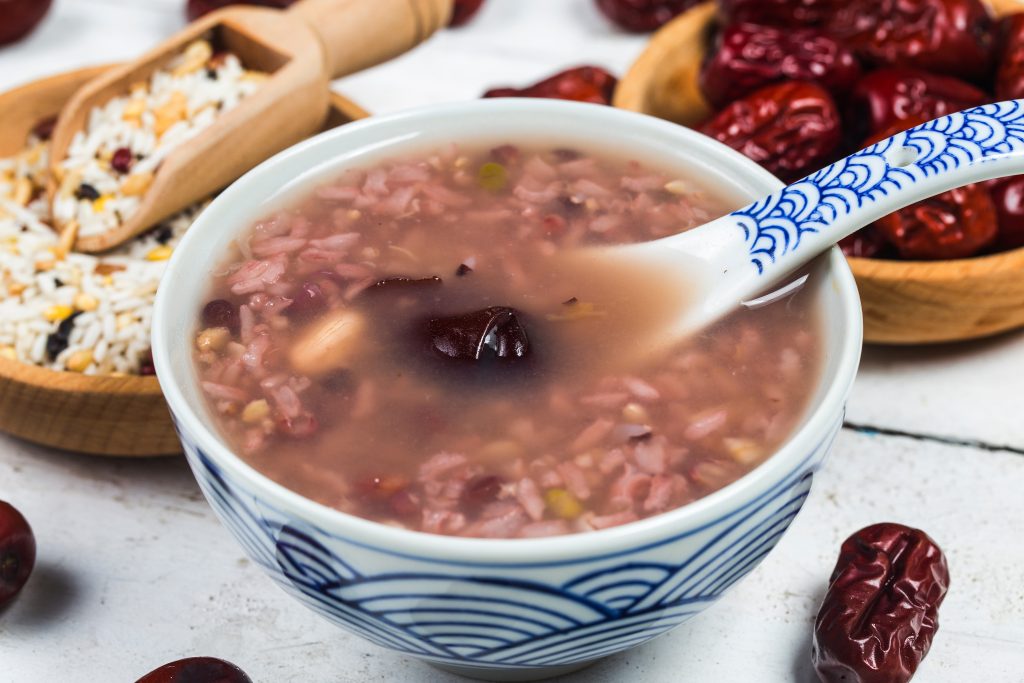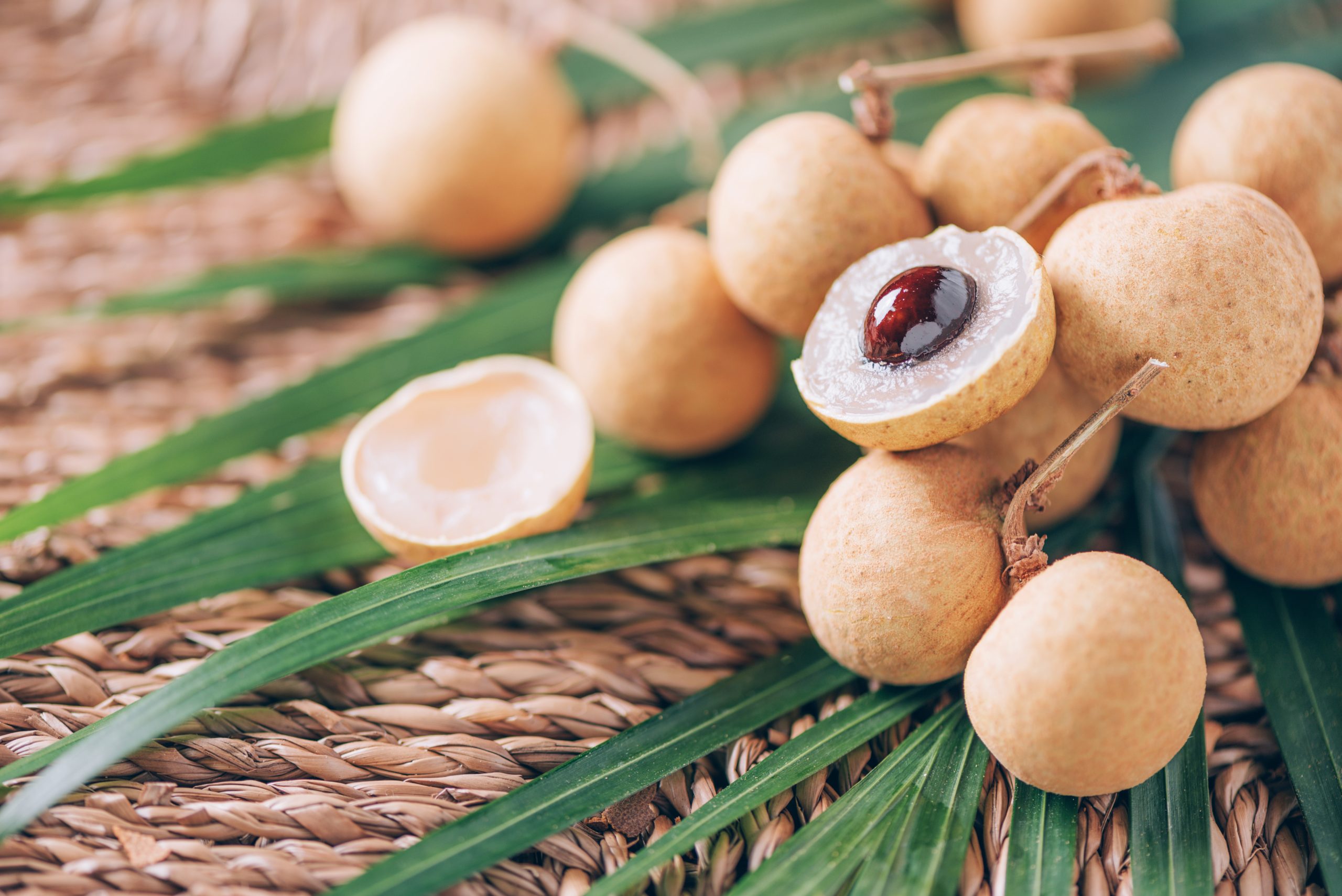Longan is a tropical fruit that originated in Southeast Asia and is now grown in various parts of the world. The fruit is small, round, and has a thin, brownish-red shell that needs to be peeled to reveal its translucent, white flesh.
Table of Contents
What is a Longan?
Longan, also known as Dimocarpus longan or Euphoria longana, is a tropical fruit native to Southeast Asia, particularly southern China, Vietnam, Thailand, and the Philippines. It belongs to the soapberry family (the Sapindaceae family), which includes fruits like lychee and rambutan.
The Longan is sometimes referred to as the “dragon eye” due to its appearance when the fruit is peeled, revealing a translucent, juicy flesh surrounding a dark, round seed.
The longan fruit is small and round, typically measuring 1-2 inches (2-5 cm) in diameter. Its thin, leathery skin ranges from light brown to yellow-brown when ripe. The edible flesh is translucent, juicy, and white, with a slightly musky aroma.
The flavor profile of the longan is typically sweet and mildly fragrant, often compared to a mix of lychee fruit and cantaloupe with a hint of honey. The fruit’s texture is firm and slightly chewy, similar to a grape.
Longans are often eaten fresh but can also be dried, canned, or used in various culinary applications, including desserts, salads, and beverages. The fruit is rich in vitamins and minerals, making it a nutritious and delicious addition to a balanced diet.
The History of Longan
Longan fruit has a unique and fascinating history deeply rooted in Chinese culture and mythology. First, it was used in Traditional Chinese Medicine as a cure for diseases like insomnia and snake bites.
Legend has it that the fruit got its name from a brave man named Longan, who defeated a dragon that terrorized a southern Chinese coastal town every August.
Longan prepared a meal of wine-soaked pork and mutton for the dragon, causing it to become drunk and vulnerable. Longan then stabbed the dragon’s left eye, but a fruit popped out instead of an eye. The same thing happened to the dragon’s right eye, and two fruit trees grew from where the hero was buried. The villagers named the fruit longan in honor of the fallen hero, and the fruit has been cultivated in China for thousands of years.
Longan fruit is native to China and Southeast Asia and has been found in regions spanning from India to China. The fruit was extensively grown and produced throughout China, spreading along trade routes and merchant ships into Europe and Australia. The United States Department of Agriculture imported longan fruits in 1903, and the fruit flourished in Florida and Hawaii.
William Whitman introduces the Kohala variety in the 1950s to the mainland US.
Today, longan fruits are widely cultivated and can be found in local markets in southern China, Taiwan, Indonesia, Thailand, Malaysia, Laos, Cambodia, Vietnam, India, and Sri Lanka. While less common than lychees, longan fruits are grown on a small scale in Australia, Mauritius, the Philippines, and the United States in California, Hawaii, southern Florida, and other parts of China like Fujian. Canned Longan fruits are exported from Hong Kong and Taiwan and sold in markets worldwide.

What Does a Longan Taste Like?a
When eaten raw, longan has a sweet, musky flavor with a texture similar to a grape. The flesh is juicy and somewhat sticky, and the taste is often described as reminiscent of lychee or a grape but with a distinct floral aroma.
When cooked, longans are often used in sweet dishes such as desserts or as an ingredient in soups. The flavor of cooked longans is slightly more concentrated, and the texture can become softer, but the sweet, musky taste remains the same.
How to Tell When Longan is Ripe
Here’s the perfect way to tell when logan is ripe:
| Color | Ripe longan has a light brown or yellowish-brown skin color. |
| Texture | The fruit’s skin should be firm, leathery, and not hard or brittle. |
| Firmness | Press the fruit with your finger; it is ripe if it gives in quickly. |
| Scent | A ripe longan has a sweet, fragrant smell. |
Important factors to consider when purchasing longan:
- When shopping for longan, look for fruits with intact skin that are not bruised, cracked, or punctured.
- Look for fruits that have a fresh and fragrant smell.
- Avoid fruits that are too soft or have brown spots, as they may be overripe.
- Buying longan in a bunch is recommended as it indicates they are all from the same tree, making them more likely to ripen simultaneously.
Are Longans and Lychee Related?
Yes, longans (Dimocarpus longan) and lychee (Litchi chinensis) are related as they belong to the same family, Sapindaceae.
They are both tropical fruits that originated in Southeast Asia and are now cultivated in various parts of the world. Longans and lychee have a hard, inedible outer shell that is removed to reveal translucent white flesh. Lastly, Longans and Lychee are seasonal fruits typically harvested in the summer.
However, there are several differences between the two fruits.
| Size and shape | Longans are smaller and rounder than lychee. They typically measure around 1 inch in diameter, while lychee can be up to 1.5 inches long and oval-shaped. |
| Taste | While both fruits are sweet and juicy, Longans have a slightly musky flavor, while lychee has a more floral and fragrant taste. |
| Appearance | Longans have a smooth, light brown shell that is easier to remove than the rough, red shell of the lychee. |
| Shelf life | Longans have a longer shelf life than lychee and can be stored for up to two weeks at room temperature. |
Is It Safe To Eat Raw Longan?
Yes, it is safe to eat raw Longan. However, The fruit is covered by a thin, inedible, leathery shell that is easily peeled away.
Raw fresh Longan can be enjoyed in various ways, such as:
- Snacking – Longan is a popular and nutritious snack, eaten on its own or mixed with other fruits like lychee, rambutan, and mango for a refreshing tropical fruit salad.
- Smoothies and Juices – Longan can be blended into smoothies or used to make fresh juice, adding natural sweetness and tropical flavor to your beverages.
- Desserts – Raw Longan can be used as a topping or mixed into desserts like ice cream, yogurt, or fruit-based puddings, adding a unique texture and taste.
- Salads – Add raw Longan to various salads, such as mixed greens or fruit salads, for a touch of sweetness and exotic flavor.
- Appetizers – Longan can be paired with savory items like cheese, cured meats, or seafood, creating delightful appetizers that balance sweet and savory flavors.
Cooking with Longan
Longan is a delicious and sweet-tasting edible fruit commonly used in various cuisines across Southeast Asia, especially in Chinese, Thai, and Vietnamese dishes. It’s often used in sweet and savory dishes and can be enjoyed fresh or cooked. Here’s a guide on how to prepare and cook with Longan:
- Start by selecting fresh and ripe longan fruits with a firm texture and sweet aroma. Choose fruits with a brown outer shell, indicating they are ripe.
- Rinse the longan fruits under cold running water and pat them dry with a clean towel.
- Using a sharp knife, make a shallow cut around the middle of the fruit and gently twist it open to reveal the white, juicy flesh and a shiny, black seed inside.
- Carefully remove the longan seed from the flesh and discard it.
- Cut the longan flesh into bite-sized pieces as per your recipe requirement.
Longan can be eaten raw, but it’s also used in various sweet and savory dishes in Southeast Asian cuisine. Longan is commonly used in sweet soups, puddings, and desserts in Chinese cuisine, such as “Eight Treasure Rice Pudding,” combined with other fruits, nuts, and glutinous rice.
In Thai cuisine, longan is used in spicy salads, curries, and stir-fries, such as “Tom Yum Goong,” combined with seafood, chili, and lemongrass to create a flavorful and aromatic soup.
In Vietnamese cuisine, longan is often used in sweet dishes, such as “Chè Long Nhãn,” a sweet soup made with longan, lotus seeds, and rock sugar.

Examples of longan dishes:
Eight Treasure rice pudding: This is a classic Chinese dessert. It’s like a treasure trove of sweetness hidden in each spoonful, with goodies like red beans, nuts, and some dried and candied fruits.
Longa Tong Sui: If you’re looking for a light, refreshing, and slightly exotic recipe, then Longa Tong Sui is the one for you. With its delicate, floral flavor, this sweet soup is like a gentle hug.
Longan Taw Cheesecake: The longan in this cheesecake is just taking things to a new level of decadence. Creamy, rich, and bursting with juicy fruit flavor, it is the perfect way to spoil yourself.
Red Date Longan Tea: Sometimes, you need a warm cup to soothe your soul. And when that tea is infused with the sweet, fruity goodness of red dates and longan fruit, you’re in for a treat.
Roasted Chicken Curry with Longan Fruit: Who says longan fruit is just for desserts? This savory curry proves that this fruit can also hold its own in the world of savory dishes. The sweetness of the longan fruit pairs perfectly with the spicy, fragrant curry sauce, and the tender roasted chicken seals the deal.
How to Store Longan
For freshness, it’s crucial to store Longan properly. Here are some storage techniques and the expected shelf life for each:
Room Temperature: When storing Longan at room temperature, keep the fruits in a well-ventilated area away from direct sunlight. This method is suitable for short-term storage. Shelf Life: 3-5 days
Refrigeration: For longer storage, place the longan fruits in a perforated plastic bag or airtight container with a paper towel to absorb excess moisture. Store them in the crisper drawer of your refrigerator. Shelf Life: 2-3 weeks
Freezing: For the most extended storage, you can freeze longan fruits. Remove the fruit from the shell and remove the seed. Then, place the arils in an airtight container or a freezer-safe plastic bag. Make sure to leave some space for expansion. Shelf Life: Up to 6 months
Drying: Dried Longan is a popular way to preserve the fruit for an extended period. Peel and deseed the fruits, then spread them on a tray or a wire rack. You can use a dehydrator or an oven at a low temperature (around 130-140°F / 54-60°C) or air-dry them in a well-ventilated area. Store the dried Longan in an airtight container in a cool, dry place. Shelf Life: Up to 1 year
Nutritional Benefits of Longan
The fruit’s nootropic properties boost cognitive function and memory and reduce the risk of Alzheimer’s disease.
Longan fruit’s iron content helps prevent anemia, improves circulation, and regulates blood pressure, while its antioxidant properties protect against chronic diseases by protecting the body against free radicals.
The high levels of vitamin C in Longan effectively improve skin health and aging by reducing oxidative damage and promoting the formation of collagen, which helps with fine lines and wrinkles.
With potent antimicrobial properties, longan fruit helps strengthen the immune system’s defense mechanism, producing sufficient white blood cells to fight infections and preventing colds and sore throats.
Longan fruit’s anxiolytic properties help improve sleep quality by reducing stress hormone levels.
Where to Purchase Longan
Longan is primarily available at specialty stores, Asian supermarkets, farmers’ markets, and online retailers. You may also find it in some regions at local grocery stores with well-stocked exotic fruit sections.
The best time to find fresh fruit is during its peak season, which typically runs from June to August. However, you can find it year-round in some locations due to international trade and modern preservation techniques.

